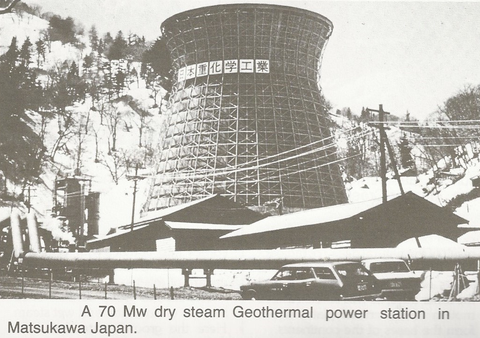Welcome to the fifth and final entry in our alternative energy series, A Future Matter
For our final article, we’re looking at another form of energy creation that dates back thousands of years: geothermal power. The first practical use of the heat generated by the Earth’s core occurred over 10,000 years ago by ancient Paleo-Indians in North America. They would use the nearby hot springs as a source of warmth, as well as to cook their food and to bathe and clean. Centuries later, Italy would be the site of the world’s first geothermal power plant, utilizing steam power to create electricity. Today, geothermal power represents one of the potential methods by which we can supplement the world’s growing energy needs and reduce our dependency on conventional fossil fuels. Before we get into the benefits and drawbacks of geothermal, let’s first take a look at how it works.

Geothermal energy involves utilizing the heat generated by the Earth’s core to harvest usable electricity. The Earth’s molten core is incredibly hot, reaching a potential temperature as high as 6,000 degrees Celsius (10,832 Fahrenheit). This immense heat generated by the core melts down the surrounding rock into liquid magma. The magma then heats up pockets of subterranean water to very high temperatures, creating a large amount of steam. The steam from these pockets of water, or “geothermal reservoirs”, is tapped and collected by the geothermal plant above ground and used to spin turbines within the power plant to generate electrical energy. The process of steam/turbine interaction means geothermal plants generate their power in a manner very similar to nuclear plants.
Now that we have an understanding of how geothermal energy is created and harvested, let’s first ask ourselves: What are the potential benefits of supporting global energy demand with geothermal power?
One advantage geothermal has over conventional fossil fuels is its inherent renewability. Heat from the core will be consistently emanated so long as the Earth exists, making it practically infinite for this application. Geothermal energy is also more stable in its electricity generation, as the heat being applied to geothermal reservoirs is a consistent source and isn’t dependant on environmental factors, like solar or wind energy. Geothermal is also considered an environmentally friendly alternative for energy, as any greenhouse emissions generated are minimal compared to average power plants. In fact, geothermal is often considered to have the lowest environmental impact and the smallest carbon footprint of all commercially available energy methods in both the impact of power plant construction and generating of power.
Another point to consider with geothermal is that although some locations are better than others, it is an energy source that is widely available across the planet. Tapping into reservoirs is also a convenient method of providing cheap heating to homes and office buildings alike. In fact, some home owners have reported a significant drop in their overall energy costs within the first few years of switching over. This is a worthwhile consideration for the use of geothermal power.

*From the Renewable Energy Handbook, William Peden, 1976
As we’ve seen throughout this series, no alternative energy source is perfect. Let’s now ask ourselves: What are the drawbacks of increasing our dependence on geothermal power?
While the greenhouse emissions from geothermal plants are smaller than other alternative energy sources, they are still an important consideration. Specifically, sulfur dioxide and silica emissions are possible and certain reservoirs have been known to contain trace amounts of toxic heavy metals like arsenic or mercury. Additionally the use of hydraulic fracturing can affect the structure of the local land, leading to possible minor earthquakes. The most notable occasion of this was in January 1997 in Switzerland when a 3.4 Richter scale earthquake hit, triggered by the construction of a new plant. Though these events are rare, it’s still an important consideration.
Establishing geothermal plants can also be a practical challenge. Like some other alternative energy methods, the startup costs for power plants can be quite high with a potential starting capacity of only 1 megawatt. Additionally, location can be a key factor as well. Even though geothermal sites are all across the planet, some are far better than others and productive reservoirs can be hard to come by in some areas. Countries such as Iceland and the Philippines have rich reservoirs that allow them to cover one third of their total energy demand. However, some other areas are less than ideal and it’s important to consider location with future projects.
What are your thoughts on the use of geothermal power as an alternative energy source on a larger scale? It is a resource that is readily available and easy to access. However the startup costs and environmental factors are important to consider in new projects. Let us know your thoughts on the matter in the comments below or on our social media channels.
We hope you’ve enjoyed our five-part series on the benefits and drawbacks of alternative energy sources.






